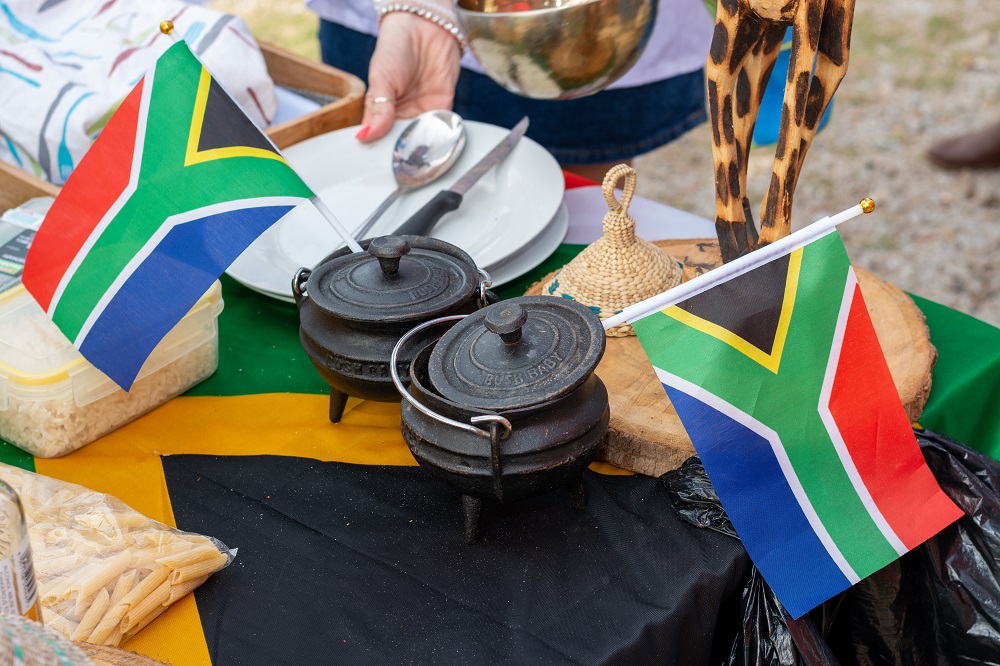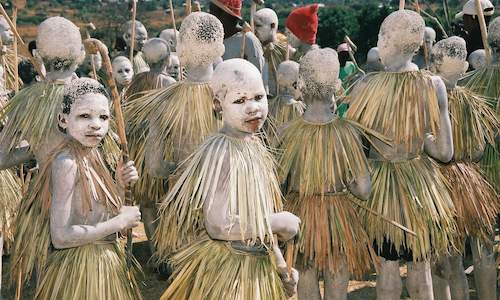South African Culture Today Things To Know Before You Get This
The Only Guide to South African Culture Today
Table of ContentsTop Guidelines Of South African Culture TodayEverything about South African Culture TodayThe Only Guide for South African Culture TodayThe smart Trick of South African Culture Today That Nobody is Talking AboutThe Best Strategy To Use For South African Culture TodayOur South African Culture Today Ideas
A matter of value in Zambian villages is the passing away of liked ones. All participants of the town placed money, time and initiative together for the funeral of the deceased.Throughout the mourning period; guys stay outside your home and the women stay inside your house of the deceased. After speaking about the deceased, the village walks to the location of funeral to claim their last farewells. Music and dancing is a really vital aspect of the Zambian culture. The different tribal devices have their own dance types; nevertheless, makishi prevails among all people.
South African Culture Today - Questions
When it involves music, drums are made use of the most, with a range of drumming ceremonies. In Zambia, majority of individuals are Christian; Protestant and Roman Catholic. There are small groups of Muslims and Hindus, with the rest complying with regional native tribal ideas.

South African heritage and society is greatly varied, and is composed of several teams of individuals that each have their very own practices and ideas. Having such a variety of individuals and cultures is what makes South Africa so special. In real sense of the expression, we are a rainbow nation.
Making it the 7th on the checklist of nations with the most Portuguese individuals in it outside of Portugal. Portuguese is not just a culture, but it is also a language and a citizenship. Portuguese individuals originate from the country of Portugal in Europe, nonetheless, due to Portugal (like several other countries in Europe) exploring the world and conquering various other countries throughout the 15th 20th centuries, South Africa has what we call Portuguese South African's living in it.
The Only Guide for South African Culture Today
Amongst the popular functions of the topography is a plateau that covers virtually two thirds of the center of the country. The plateau facility increases towards the southeast, where it culminates in the Drakensberg range, part of an escarpment that separates the plateau from the coastal locations. The Drakensburg consists of Champagne Castle, the greatest top in the nation.
The area north of the Witwatersrand, called the bushveld, inclines downward from east to west toward the Limpopo River, which develops the international boundary. The western area of the plateau, the middleveld, additionally comes down in the direction of the west and varies in altitude between the highveld and bushveld. Between the Drakensburg and the eastern and southern coastline, the land descends to the sea.
Nearer the shore there is a low-lying plain called the eastern lowveld. Southwest of the plateau the country becomes progressively much more dry, giving way to the stony desert of the Great Karroo, verged on the east by the reduced, better sprinkled plateau of the Little Karroo. Separating the dry southerly interior from the sandy coastal of the southerly shore and West Cape is an additional array, the Langeberg.
All about South African Culture Today
The nation's racially, ethnically, and politically divided history has generated national and subnational symbols that still function as symbols of the nation, and others signs that are approved just by certain teams. The monoliths to white settler occupation and political supremacy, such as the Afrikaner Voortrekker ("leader") Monument in Pretoria and the Rhodes Monolith honoring the British colonial realm building contractor and Cape prime minister Cecil Rhodes, continue to be sectarian icons.
The very first modern occupants were the San ("bushman") hunter-gatherers and the Khoi ("Hottentot") individuals, who rounded up animals (South African culture today). The San might have existed for thousands of years and left evidence of their presence in thousands of old cavern paints ("rock art"). Bantu-speaking clans that were the forefathers of the Nguni (today's amaZulu, amaXhosa, amaSwazi, and vaTsonga peoples) and Tswana-Sotho language groups (today's Batswana and Southern and Northern Basotho) moved down from east Africa as early as the fifteenth century

The 2 previous republics of the Orange Free State and Transvaal (South African Republic) were developed by Afrikaner settlers that beat and dispossessed the Basotho and he said Batswana. Lesotho would certainly have been forcibly integrated right into the Orange Free State without the expansion of British defense in 1869. The utmost unification of the country resulted from the South African Battle (18991902) in between the British and the two Afrikaner republics, which reduced the nation to spoil at the beginning of the twentieth century.
Afrikaners traditionally considered themselves the just true South Africans and, while granting full citizenship to all citizens of European descent, refuted that standing to people of shade until the autonomous transition of 1994. British South Africans maintain a sense of cultural and social connection to Great Britain without damaging their identification as South Africans.
The South African Culture Today Statements
The variety and fragmentation within ethnic groupings and the balance of tensions between those groups throughout the twentieth century protected against interethnic civil dispute. While intergroup tensions over resources, privileges, and political prominence stay, those disputes are as most likely to pit Zulu versus Zulu as Zulu against Xhosa or African versus Afrikaner.
From colonial India, British sellers and administrators brought the bent steel decorative roof coverings and slim lace work pillars that still symbolize the verandas of cottages in the areas and cities throughout the nation. Holy places add a vital building facet even in the tiniest towns. In addition to the skyrocketing steeples and classic stonework of Afrikaans Dutch Reformed churches, Anglican churches, synagogues, mosques, and Hindu temples address give selection to the spiritual building scene.

Butchering and the brewing of standard cereal beer are essential in securing the engagement and a good reputation of the ancestors her response who are taken into consideration the guardians of great fortune, prosperity, and wellness. Indian communities maintain their indigenous culinary customs and apply them on Islamic and Hindu ritual and ritualistic events. Afrikaners and Coloured people collect at weekend breaks and unique celebrations at multifamily barbeques called braais, where neighborhood bonds are strengthened.
Due to the fact that this was the primary economic enterprise of both black Africans and white homesteaders, dispute between those teams fixated the ownership of grazing land and animals. In 1867, the largest ruby deposits in the world were uncovered at Kimberley in the west main area. The wide range from those areas aided finance the exploitation of the best gold coral reef on the planet, which was uncovered on the Witwatersrand in 1886.
More About South African Culture Today
This resulted in misconceptions and purposeful misstatement in the dealings of white inhabitants and federal government officials with African chiefs throughout the early american duration (South African culture today). In the establishment of African reserves, some aspects of common and primarily "tribal trust fund" land tenure were preserved, and even in white rural locations, types of communal period were still exercised in locations with African communities
After the democratic change of 1994, programs for land restitution, redistribution, and reform were instituted, but progression has been slow-moving. The white minority still manages eighty percent of the land. Following agricultural land intrusions in Zimbabwe, the Department of Land Affairs has actually promised to speed up land redistribution.